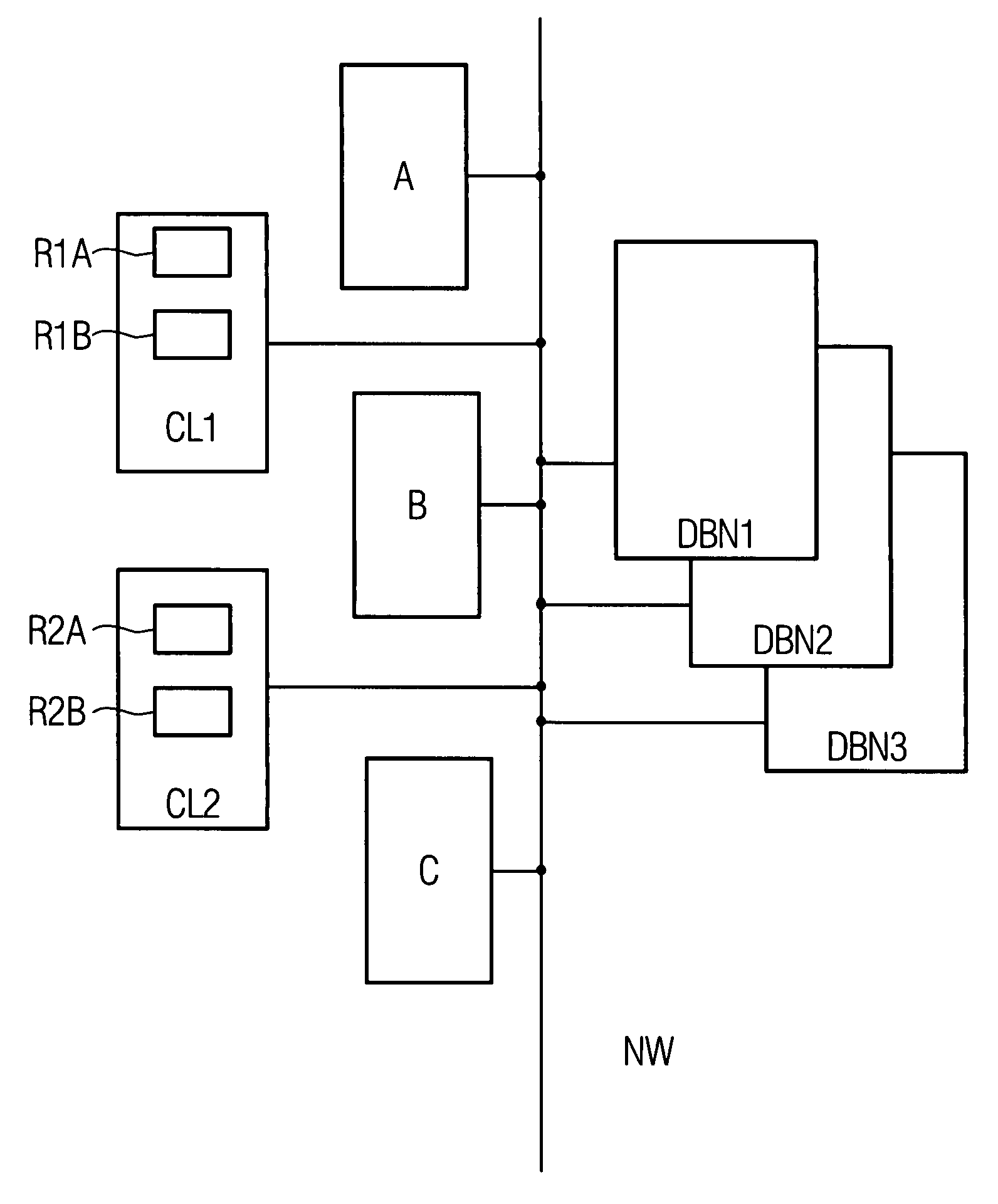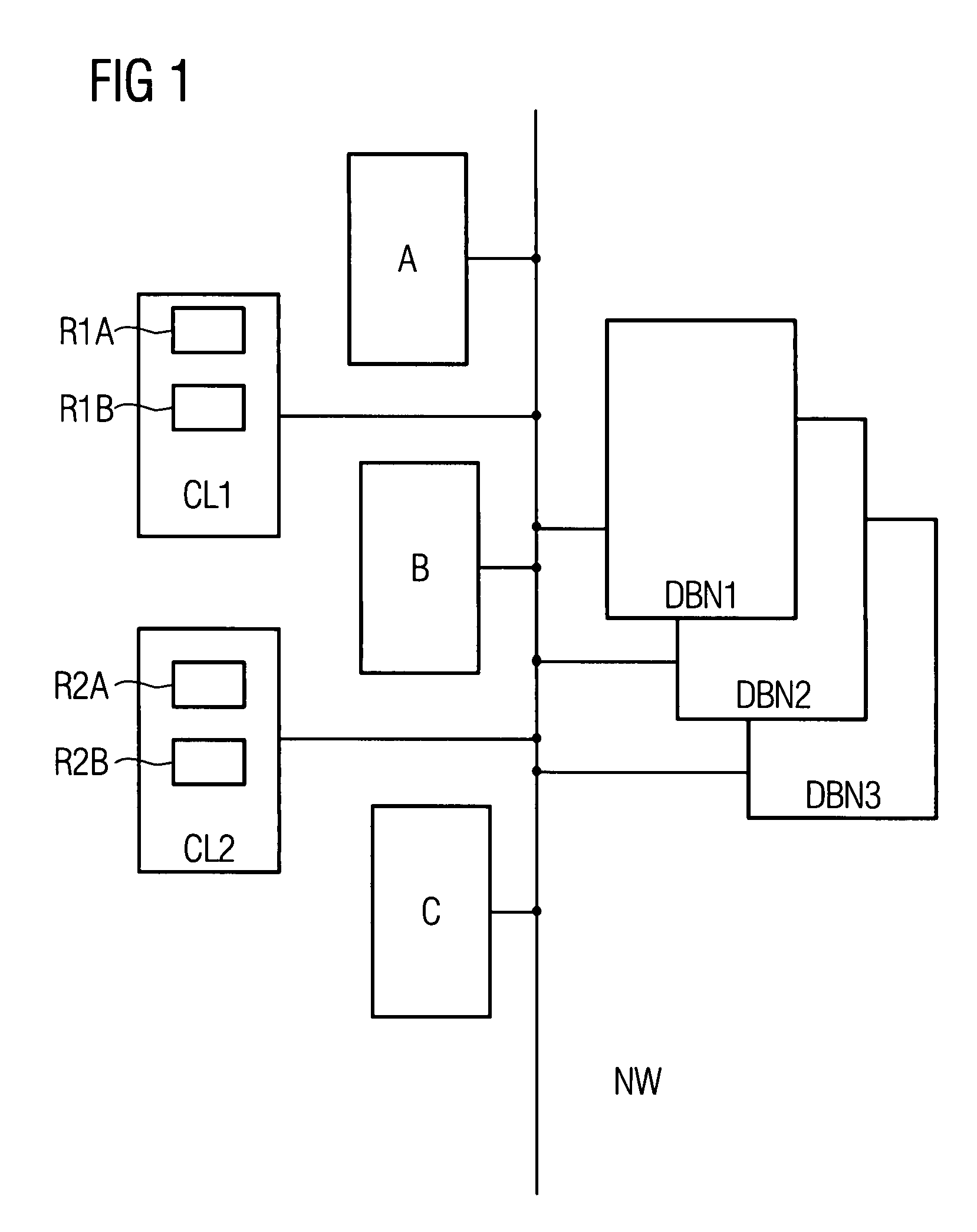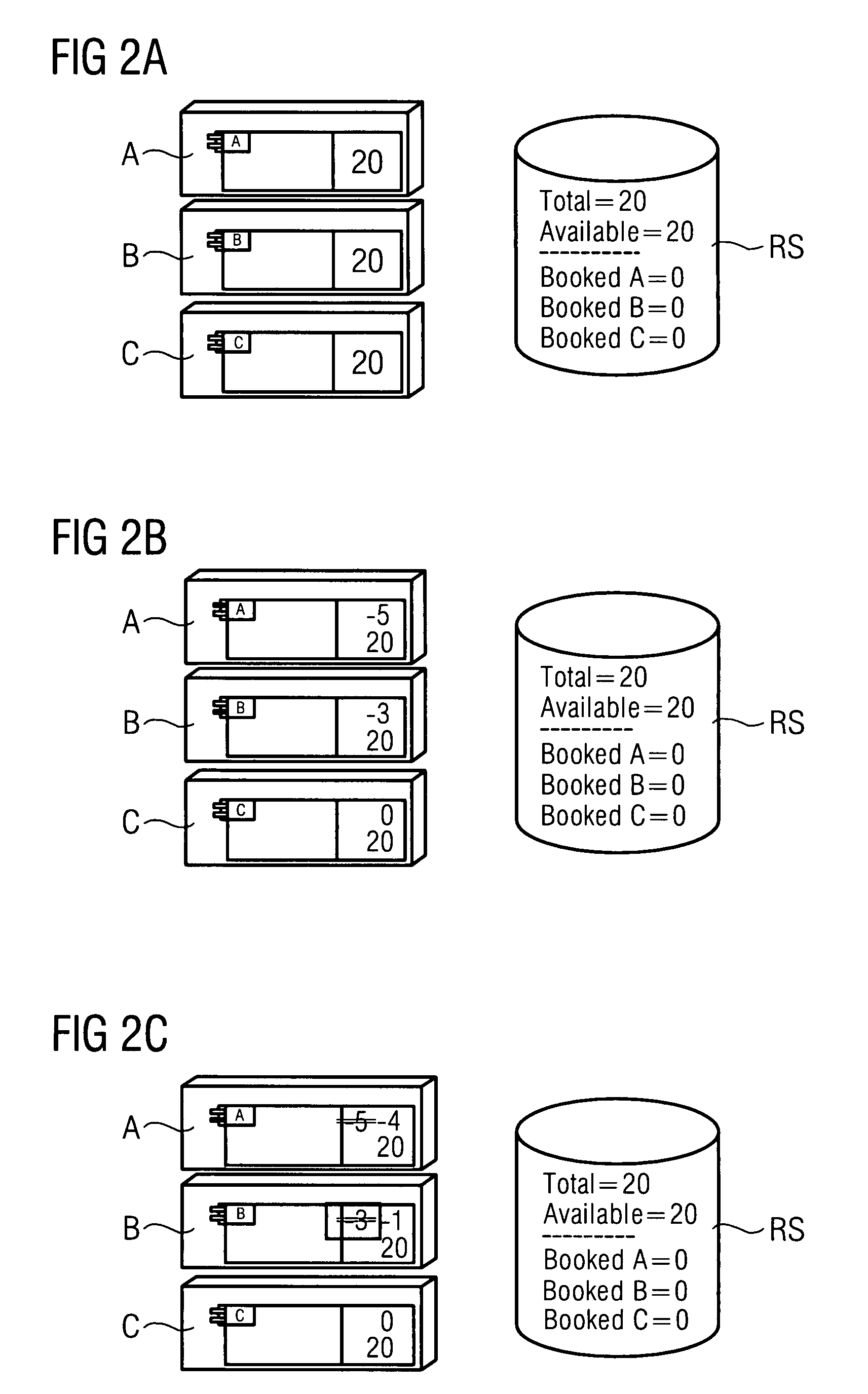Method and arrangement for managing licenses
a technology of managing licenses and methods, applied in the field of methods and arrangements for managing licenses, can solve the problems of increasing network load and severely restricting the functionality of the entire network, and achieve the effect of good control of overload respons
- Summary
- Abstract
- Description
- Claims
- Application Information
AI Technical Summary
Benefits of technology
Problems solved by technology
Method used
Image
Examples
Embodiment Construction
[0027]FIG. 1 schematically shows an arrangement comprising a network NW (communication network, data network, intranet, Internet or the like) with database nodes DBN1, DBN2, DBN3, with application nodes A, B, C, with client systems CL1, CL2 and with resources R1A, R1B, R2A, R2B. The schematically shown components in this instance constitute what is known as a “distributed arrangement” (distributed system), with the individual components being able to be arranged with free “mobility”, that is to say at any location, in the network NW. This applies particularly to the database nodes DBN1, DBN2, DBN3, which logically form a single database but for reasons of load distribution and for reasons of redundancy (failsafety) are physically distributed over various hardware units. Equally, although FIG. 1 shows the resources R1A, R1B as belonging to the client system CL1—in line with the resources R2A, R2B for the client system CL2—the resources under consideration here may likewise be arrange...
PUM
 Login to View More
Login to View More Abstract
Description
Claims
Application Information
 Login to View More
Login to View More - R&D
- Intellectual Property
- Life Sciences
- Materials
- Tech Scout
- Unparalleled Data Quality
- Higher Quality Content
- 60% Fewer Hallucinations
Browse by: Latest US Patents, China's latest patents, Technical Efficacy Thesaurus, Application Domain, Technology Topic, Popular Technical Reports.
© 2025 PatSnap. All rights reserved.Legal|Privacy policy|Modern Slavery Act Transparency Statement|Sitemap|About US| Contact US: help@patsnap.com



